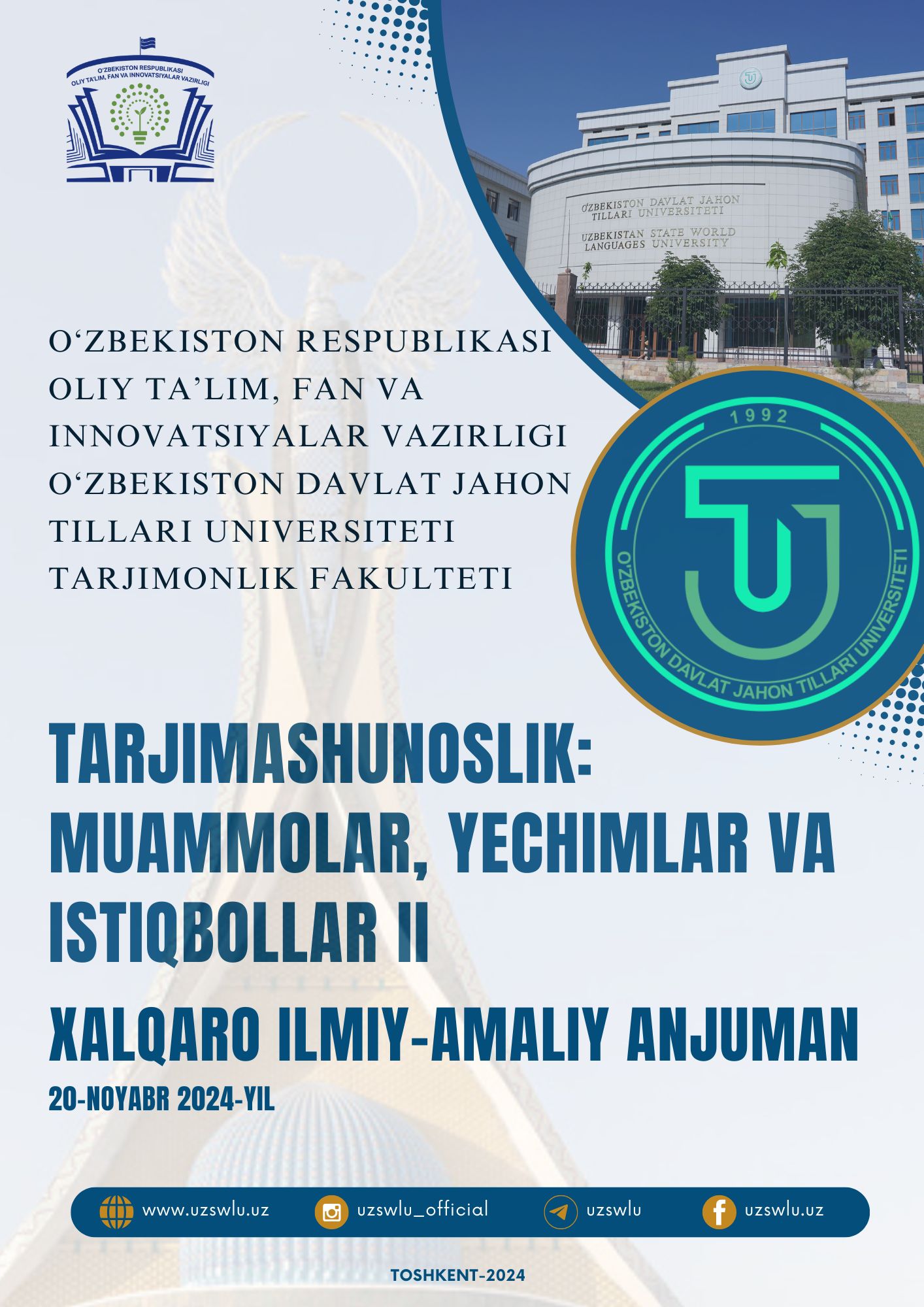NEUROCOGNITIVE STUDIES OF TRANSLATION: ILLUSTRATED BY A DYNAMIC VIEW OF THE NEUROCOGNITION AS A TRANSLATION PROCESS
Kalit so‘zlar
Neurocognitive studies, translation, bilingual processing, cognitive load, fMRI, EEG, brain response, linguistic tasks, working memory, executive control.Annotasiya
The field of neurocognitive research provides valuable insights into how the human brain processes complex linguistic tasks, such as those encountered by translators. This article examines the neurocognitive mechanisms that underlie translation, highlighting the cognitive load, brain regions activated, and neural pathways engaged during bilingual processing. Using advanced neuroimaging techniques, such as functional Magnetic Resonance Imaging (fMRI) and Electroenceph alography (EEG), researchers have identified critical areas, including the prefrontal cortex, angular gyrus, and Broca’s area, that play pivotal roles in translation tasks. The findings emphasize the interplay between working memory, executive control, and language comprehension, offering implications for translator training and cognitive enhancement strategies. The necessity of this research lies in improving transla tion pedagogy and fostering a deeper understanding of the cognitive demands faced by translators
Foydalanilgan adabiyotlar ro‘yhati
Baddeley, A. (2000). The Episodic Buffer: A New Component of Working Memory? Trends in Cognitive Sciences, 4(11), 417-423.
Babcock, L., & Vallesi, A. (2017). Translation and the Brain: How Bilinguals Switch Languages. Neuropsychologia, 95, 1-13.
Christoffels, I. K., de Groot, A. M., & Kroll, J. F. (2006). Memory and Language Switching in Bilinguals: Insights from Neurocognitive Studies. Journal of Memory and Language, 55(3), 491-503.
Hervais-Adelman, A., Moser-Mercer, B., & Golestani, N. (2015). Brain Functional Plasticity Associated with the Practice of Simultaneous Interpretation. NeuroImage, 107, 114-125..
Rahimov, I. (2015). "The Role of Russian Language in the Development of Uzbek Technical Terminology." Central Asian Journal of Language Studies, 12(3), 45-58.
Vinay, J. P., & Darbelnet, J. (1995). Comparative Stylistics of French and English: A Methodology for Translation. John Benjamins Publishing.

